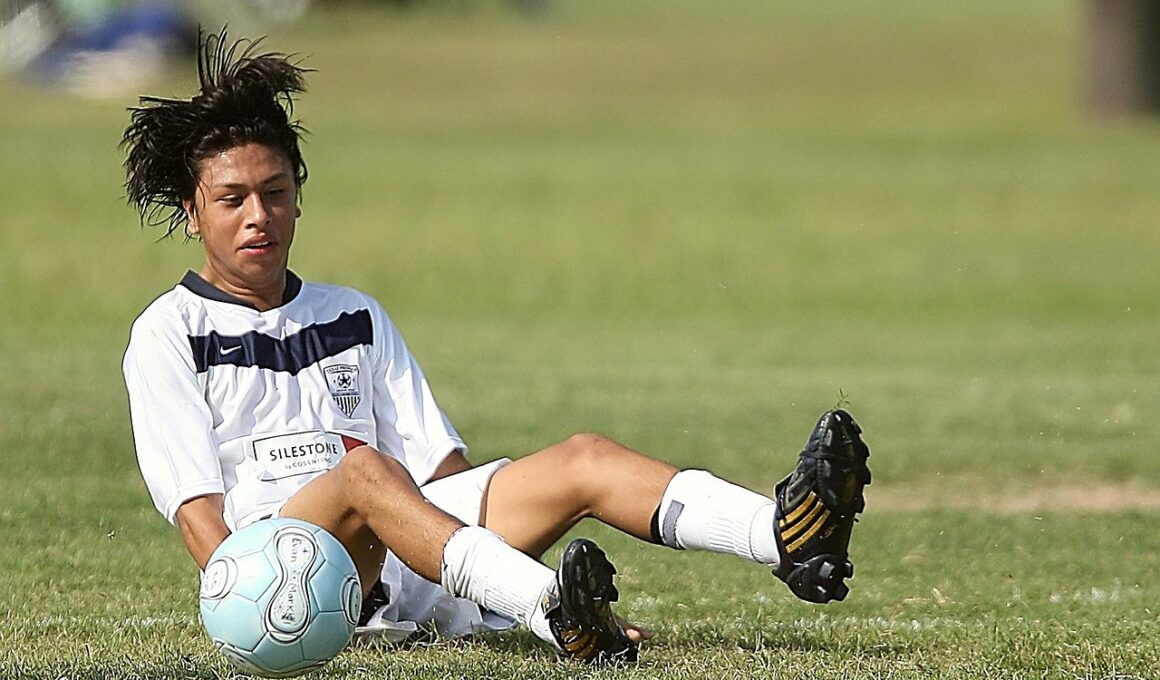History of Dodgeball as a Competitive Team Sport
Dodgeball has a storied history, tracing its roots back to ancient games. While various cultures have played similar ball-throwing games, the modern version has evolved significantly from its early days. Originating in Asia, versions of dodgeball were played with stones or heavy balls, creating a test of agility and speed. It is generally believed that the game we know today gained traction in the United States after World War II. During the 1950s, schools began to adopt dodgeball as a competitive team sport, specifically promoting teamwork and strategy. Additionally, it became a staple in physical education classes across the country. By the 1970s and 1980s, leagues and tournaments began to emerge, formalizing rules and fostering competition. The sport’s accessibility made it favorable in schools and community centers. Teams quickly learned how to utilize effective strategies for defeating opponents, with players developing specific skills tailored to dodgeball. Furthermore, the game encouraged inclusivity, allowing players of various athletic backgrounds to participate. The growing popularity of dodgeball set the stage for national and international competitions, paving the way for its current status as a widely recognized sport.
Evolution of Dodgeball Rules and Structures
The evolution of dodgeball rules has been pivotal in shaping the game we play today. Initially, rules were unwritten, leading to varied interpretations across different regions. As the sport grew in popularity, the National Dodgeball League (NDL) emerged to standardize rules, making competitions fairer and more organized. These newly codified rules included court dimensions, throw regulations, and player conduct guidelines. They aimed to improve gameplay and ensure safety, thus attracting broader participation. The most recognized standardizations involved the types of balls used—typically rubber or foam—and the number of players on each team. Additionally, rules regarding elimination and re-entry of players were clarified. In organized competitions, aspects like time limits for matches and allowed substitutions became crucial for structuring the event flow. With a unified rule set, dodgeball leagues have become popular at schools, recreational centers, and organized tournaments worldwide. The NDL and similar organizations have ensured consistency, encouraging leagues to form in various countries. As the rules continue to evolve through feedback from players and coaches, dodgeball strives to balance competitiveness and enjoyment for participants and spectators alike.
The rise of dodgeball as a competitive sport is also attributed to its media representation. Television has played a significant role in popularizing the sport, with tournaments sometimes featured in sports programming. Notably, the “Dodgeball: A True Underdog Story” film introduced dodgeball to a broader audience, highlighting its comedic elements while showcasing the competitive environment. Such media attention has led to a resurgence of public interest and participation in the sport. Schools, colleges, and adult recreational leagues have reported increased enrollment in dodgeball programs since the early 2000s, fostering new generations of players. Furthermore, the growth of social media allowed enthusiasts to share their passion for the game, creating viral moments and challenges that further promote dodgeball. Online platforms have enabled the formation of communities around dodgeball, where players exchange tips, strategies, and experiences. The increased visibility of dodgeball has led to sponsorship opportunities and the establishment of professional teams, elevating the sport’s status. Today, dodgeball tournaments attract large crowds, with competitors aiming for recognition and titles. As the sport becomes further embedded in pop culture, its potential for continued growth and evolution appears promising.
The Role of Dodgeball in Physical Education
Dodgeball’s role in physical education is crucial, providing students with vital life skills while fostering a positive attitude towards physical activity. As a team sport, dodgeball enhances important aspects of teamwork, communication, and sportsmanship. By engaging in dodgeball, students learn to work collaboratively to achieve their objectives, developing mutual respect and trust. The game promotes physical fitness, helping students improve their agility, hand-eye coordination, and reflexes. Moreover, dodgeball encourages students to strategize, enhancing their problem-solving skills. Participation can instill confidence in children, allowing them to embrace challenges and learn resilience. This combination of skill development and fitness makes dodgeball an invaluable addition to any school’s physical education curriculum. The inclusive nature of the game means that students of all athletic levels can participate and enjoy, breaking down barriers related to skill disparities. Furthermore, dodgeball fosters a sense of community both in classrooms and across schools, often becoming a highlight of school culture. Trends in physical education continue to lean towards fun, engaging activities, making dodgeball an increasingly beneficial choice for educators aiming to promote health and teamwork among students.
In addition to physical education, dodgeball significantly impacts community engagement and social interaction. Local leagues and tournaments bring together diverse groups of people, transcending age, background, and skill level. Such events foster camaraderie among participants, encouraging relationships beyond the game. Many communities see dodgeball tournaments as opportunities to fundraise for charitable causes, creating a greater sense of purpose. Players often bond through shared experiences, whether in casual settings or competitive environments. This social component helps create lasting friendships while promoting active lifestyles. Furthermore, dodgeball communities offer a platform for networking, providing members with support and encouragement in their endeavors. This communal aspect also extends to the organization of leagues, where volunteers often come together to ensure events run smoothly. Dodgeball has become a way for communities to promote health, teamwork, and charity, weaving together the fabric of social environments. As the sport continues to grow, its community-oriented nature remains a central theme. Consequently, many people are compelled to join in, leading to an inclusive and vibrant dodgeball culture wherever the sport is played.
Dodgeball’s Future as a Competitive Team Sport
The future of dodgeball as a competitive team sport looks promising. Continued advancements in technology mean better training resources and analysis tools for athletes. These developments will enable players to strategize and improve their skill sets. Moreover, technology facilitates video sharing that showcases matches, events, and individual skills, further enticing participants and spectators alike. Dodgeball organizations also recognize the relevance of social media, utilizing platforms for promotion and engagement. By reaching younger audiences through digital trends, there is potential for greater participation rates and increased interest in competitive play. Additionally, the focus on youth and recreational leagues ensures a steady influx of new players, helping develop the sport’s talent pool. As schools and clubs embrace dodgeball’s health and fitness benefits, its presence in community sports will likely expand. Continuous engagement at various levels will encourage emerging talent, possibly leading to professional-level competitions in the future. Creative event formats, grant spending, and cross-promotional activities with other sports can attract diverse audiences. All these aspects indicate a bright future for dodgeball as a competitive team sport, encouraging teams to strive for excellence and participation.
In conclusion, the journey of dodgeball from its origins to its modern-day competitive format illustrates the sport’s enduring appeal. Its evolution in rules and structures ensures that it remains accessible and engaging for players and spectators alike. Dodgeball’s role in promoting teamwork, athleticism, and social connection can’t be underestimated. As schools and communities continue to integrate dodgeball into their physical education programs, its influence on fitness and socialization will persist. With the established organizational support and growing interest, dodgeball stands poised to capture even greater popularity. As media coverage and community events drive engagement, the sport will likely see continued growth. Future generations may embrace dodgeball as an essential part of their athletic experience. Whether through school programs or community leagues, dodgeball has secured its place as a beloved sport. The combination of physical fitness, enjoyment, and community spirit makes it a perfect fit for all. As dodgeball evolves, it will continue to inspire friendships and competitive spirit, ensuring a bright future for this thrilling team sport.
Dodgeball in Various Landscapes
Dodgeball’s appeal stretches remarkably across various landscapes, resonating with individuals and teams worldwide. Different playing styles have emerged, influenced by regional preferences and cultures, creating diverse yet competitive environments. Countries develop their unique interpretations, whether they favor a fast-paced game or a more methodical approach. This adaptation contributes to the sport’s global popularity, showcasing its flexibility; even in traditional environments such as schools and community centers, dodgeball thrives. Playing in unusual settings like beaches or parks often transforms the experience, injecting a fun dynamic that captivates players and audiences alike. Various formats such as co-ed tournaments or themed competitions provide exhilarating options for participants. This versatility appeals to new players who might be deterred by conventional sports’ barriers, allowing dodgeball to attract fans from non-traditional backgrounds. Furthermore, the sport serves as a platform for inspiring fitness journeys for those who may otherwise shy away from physical activity. The rise of cross-discipline competitions and collaborative sports illustrates dodgeball’s expanding presence. Ultimately, this elastic nature will ensure dodgeball remains an exciting and cherished sport for years to come.


